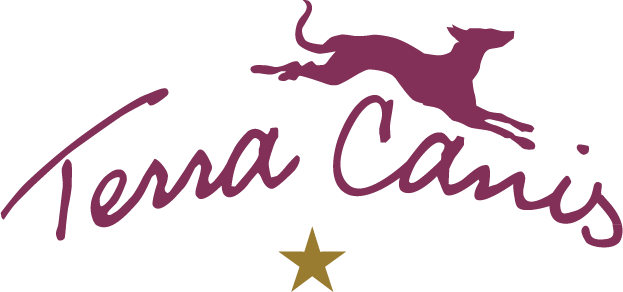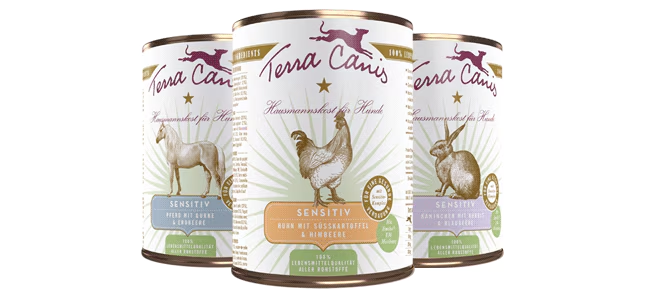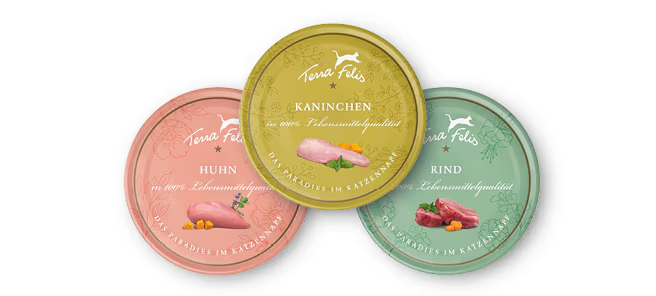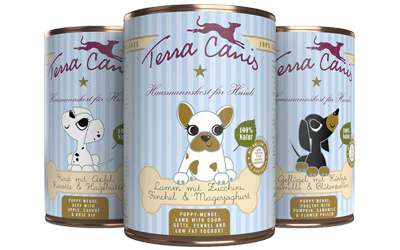Puppies & Seniors
Feed young and old dogs the right way
The optimal start in life – feeding puppies correctly
From four weeks old, the puppy normally still suckles milk from its mother, but is steadily introduced to solid food. In order to make the transition to its own food bowl easier for the small puppy, the food should be easily digestible and contain a sufficient quantity of nutrients to provide optimum support for growth and organ development. The energy requirements of a growing dog are approx. twice as high as that of a fully grown dog. The reason for this is the increased tissue growth and the development of the entire body during growth. After the sixth month of age, when the puppy has reached approx. 40 per cent of its adult weight, its increased requirements drop in alignment with its growth curve. The puppy now needs an increased intake of protein in order to grow new tissue and for the development of muscles. It is important here that the protein isn’t only of an excellent quality, but is also very easily digestible. The young dog requires an additional portion of calcium for its bones, which have not yet completely grown. This can be provided in a natural and healthy way with an additional portion of high-quality eggshell. And in order to protect the gastrointestinal tract which is not yet fully developed, the amount of grain in a puppy’s menu should be kept low and should not exceed five per cent. Alternatively, grain can be omitted completely. Small portions spread out throughout the day are also lighter on the stomach and ease the transition from mother’s milk to a bowl. .
Feeding frequency for puppies
Up to 6th month, 4 meals/day
From 6th month, 2–3 meals/day
From 12 months of age, feeding can start to match that of an adult dog. For large and extra-large breeds it is recommended that feeding as an adult dog should start at nine months to avoid energy intake from being too high. It is important that young dogs are not allowed to get too round. The bones’ growth joints don’t close until after twelve months of age. Every kilogram of extra weight causes stress to these unstable bones and joints, which, in the worst case scenario, could lead to chronic joint disease. Feeding should be carried out in such a way as to show an average, and not a maximum, growth curve. In order to check this, dog owners should regularly weigh their puppies and adjust the amount of food accordingly.
Fit and healthy until old age – the right diet for seniors
The main aim of a senior dog’s diet is to support its health and the immune system, to maintain an optimum weight and muscle structure and to prevent chronic illnesses. Stressful situations, sudden changes to the diet and every other kind of stress should be avoided. Another natural process while the dog is ageing is the gradual reduction of fat-free body mass – i.e. muscles. This causes the protein reserves hidden in muscles to reduce. Dogs normally activate these protein reserves to compensate for physical effort and difficult situations such as illness, hunger or other stressful situations. As older dogs are more prone to stress due to their often weaker immune system and possible previous illnesses, it is important to compensate for the missing protein reserves by adding high-quality, easily digestible protein. For this reason the dog now requires a much higher quality of muscle meat and as little fat as possible in its diet in order to meet the changing metabolism requirements. The intake of sufficient protein is important because these amino acids are vital to the body for numerous structural and regeneration processes, cell development and the maintenance of body tissue.
Senior dogs should not eat any more grain in order to prevent digestion and utilisation of nutrients from being put under any more strain. Instead, more healthy fruit and vegetables should be provided to support digestion which is now becoming slower and slower. A perfect balance of medicinal herbs can prevent or alleviate age-related problems with the heart, kidneys, joints and immune system.
One of the best ingredients in an older dog’s diet is goat’s milk, which contains an exceptionally high amount of nutrients. It is also very rich in high-quality, easily-digestible protein and well known for a positive effect on digestion.
Dogs become seniors at different ages depending on their breed. Extra-large animals are counted as ‘oldies’ as early as five or six years old, while very small dogs don’t reach this league until they are twelve years old. However dog owners will notice when their dogs are ‘getting on a bit’ when they are no longer as agile and resilient as they were.





